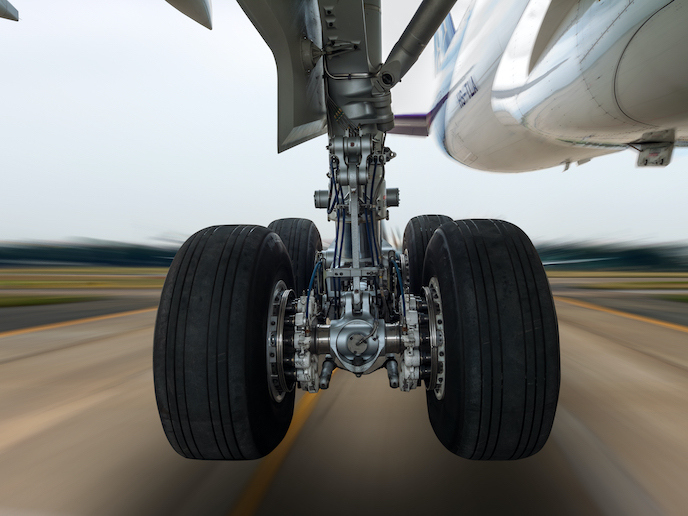An eco-friendly way to protect aluminium alloy landing gear
To help aircraft become lighter and thus more fuel-efficient, aircraft designs have incorporated such high-performance lightweight materials as aluminium alloys. The challenge, however, is to ensure that these aluminium alloy components can withstand the excessive friction and corrosion that aircraft systems are subjected to. These components are typically protected by anodising(opens in new window) the surface and adding multilayer painting – both of which use hexavalent chromium(opens in new window) (Cr(VI)). A known carcinogen, the EU is set to further restrict the use of Cr(VI) substances. As a result, new solutions are needed. That’s why the EU-funded ECOLAND project has developed an alternative to Cr(VI)-based anodising and painting. “Our solution is based on an anaphoretic electrocoating, or e-coat, process that complies with the EU REACH Regulation(opens in new window),” explains Jorge Rodriguez, aerospace business development manager at CIDETEC(opens in new window), the lead partner in the ECOLAND project. “Not only does this new solution comply with the latest regulations, it also helps reduce emissions, lower costs and improve corrosion resistance.”
From two to one
Anaphoretic coating is a type of electrophoretic coating where the object being coated is connected to the electrolysis circuit as the anode. As a result, it is coated with the negatively charged paint molecules. Anaphoretic electrocoating, on the other hand, involves applying an organic coating anodically by immersion using electric current. “Its key advantage is that it enables painting without having to first apply priming,” adds Rodriguez. “This innovation cuts application time in half and replaces two layers that traditionally contain Cr(VI) with a single cut.”
A comparative study
During the ECOLAND project, researchers conducted a comparative study on the performance of two anaphoretic coating systems applied to series 7000 aluminium alloys. One e-coating was an epoxy(opens in new window) and highly pigmented anaphoretic system, while the other was a colloidal polyurethane anaphoretic system. While the former has been approved by several aeronautical companies, the latter is more attuned to industrial implementation. The technology was validated in a relevant testing environment, with both e-coating systems being applied on validation panels and demonstrators. The performance of both systems was also compared to that of a conventional Cr(VI)-containing process. “Compared to a Cr(VI) containing process, our e-coatings offer a 40 % reduction in emissions, 13 % reduction in energy consumption, 30 % reduction in lead time, and 21 % cost savings,” says Rodriguez.
Good adherence and resistance
According to Rodriguez, the project succeeded in achieving technology readiness level 5 (TRL). “The results of this work show that both the pigmented and colloidal systems offer good adherence; resistance to scratching, erosion, and chemicals; and the ability to be painted,” he adds. “Furthermore, both show similar corrosion resistance and fatigue behaviour to those of the raw material.” Researchers are currently in conversation with chemical suppliers as they work to increase the e-coating solution to TRL 9. “This project is a clear example of how chemical compounds affected by the REACH Regulation can be removed via disruptive changes to the application process,” concludes Rodriguez.







